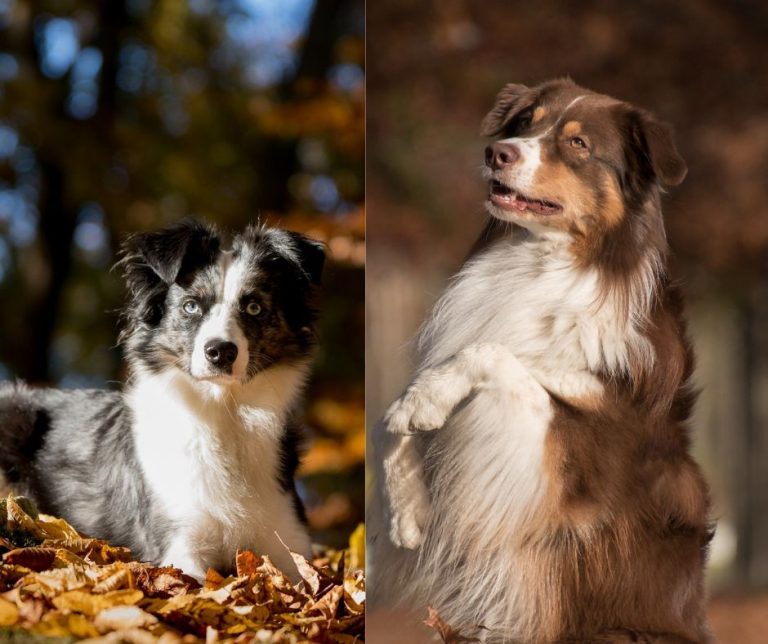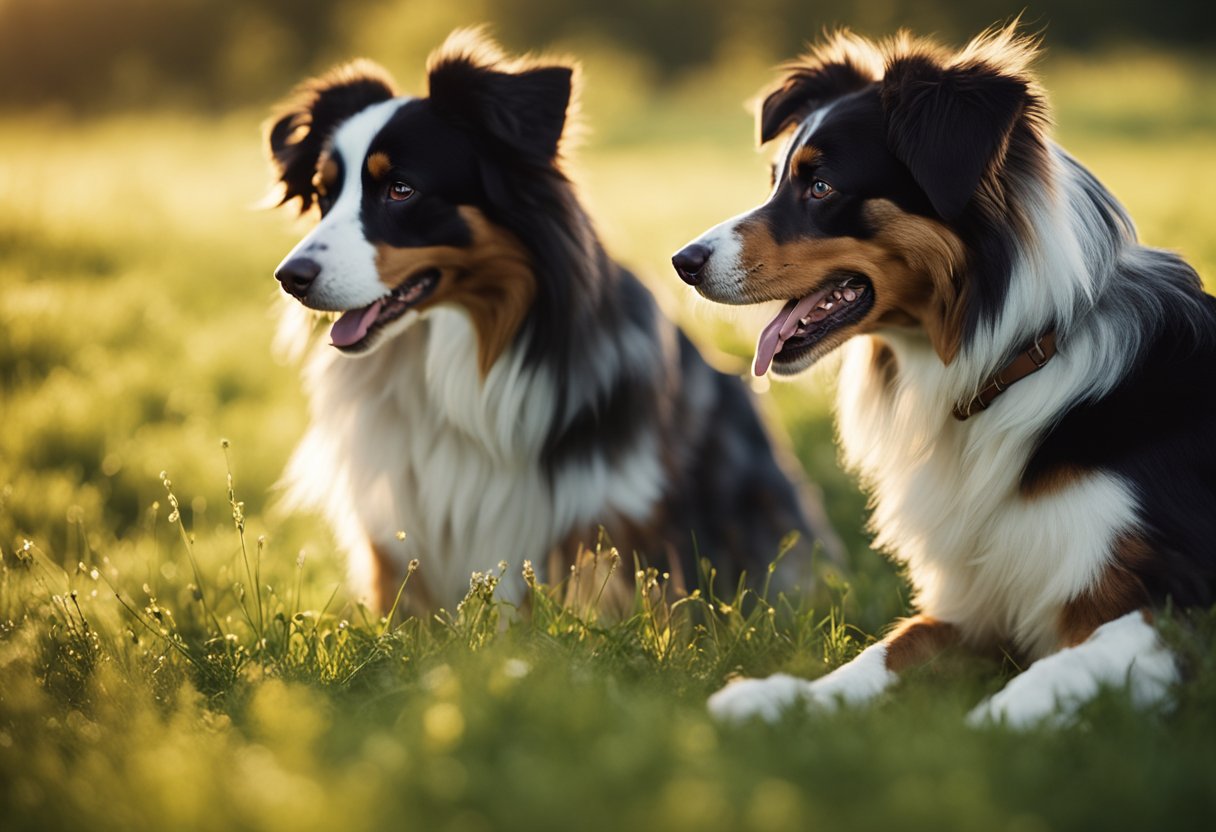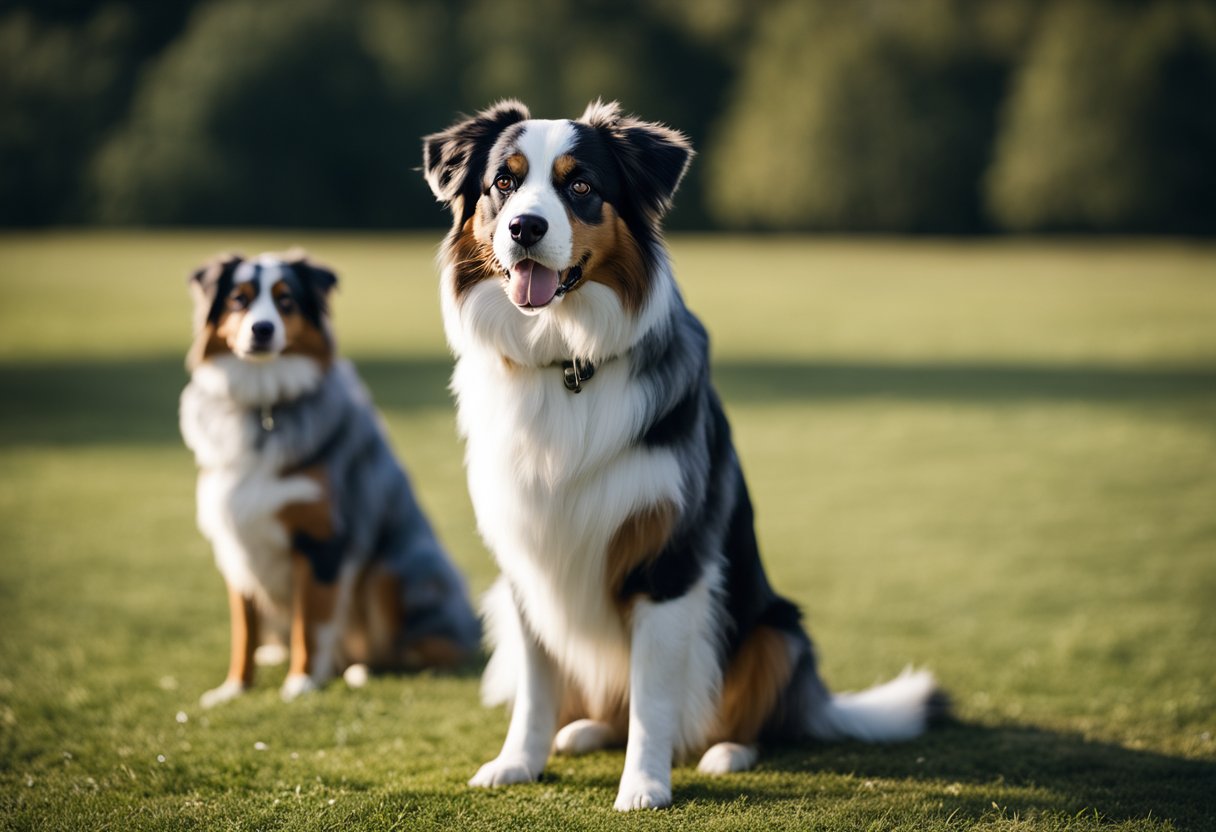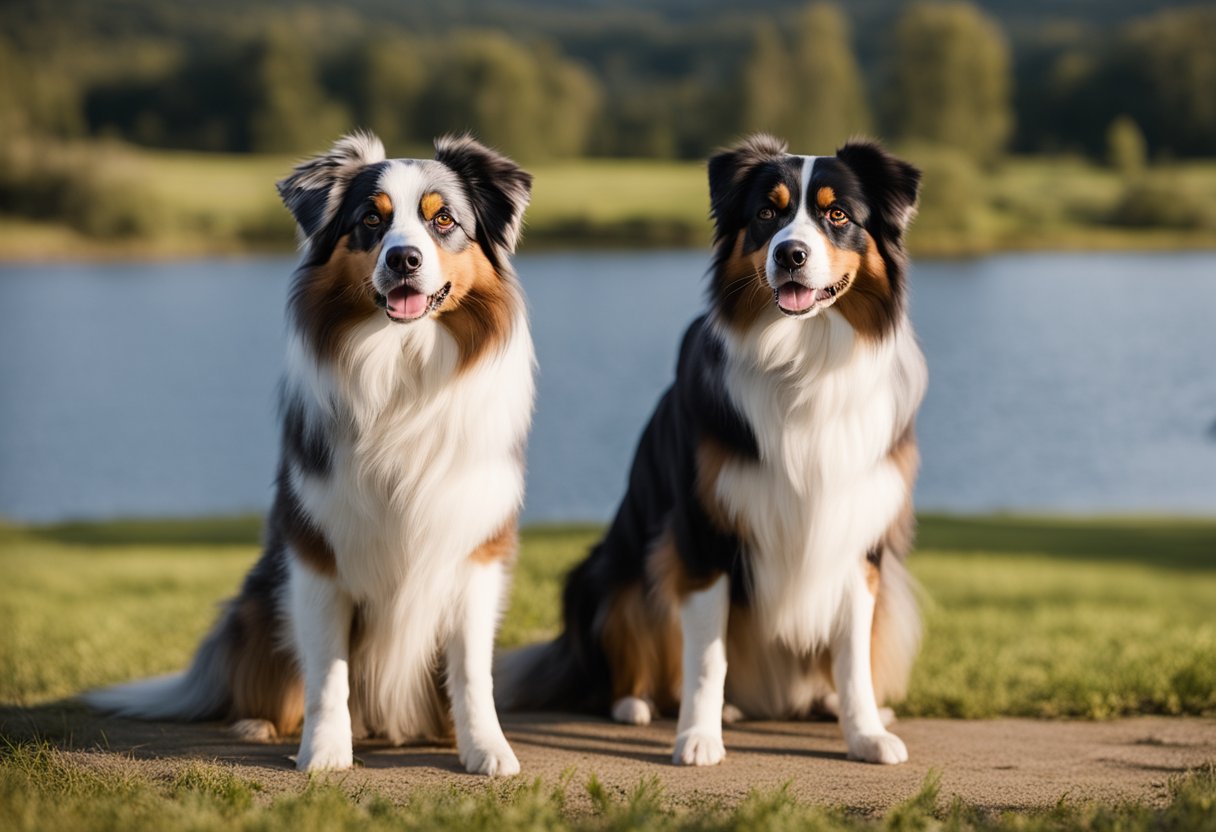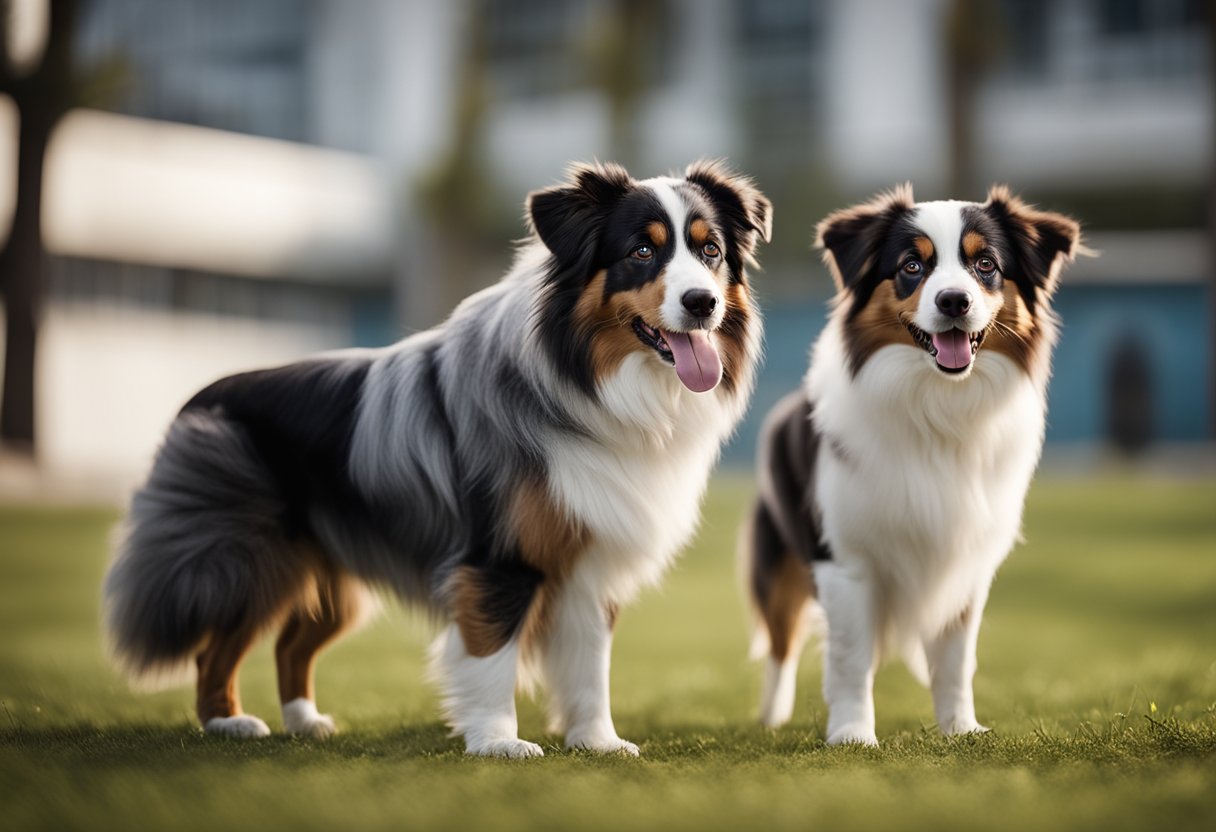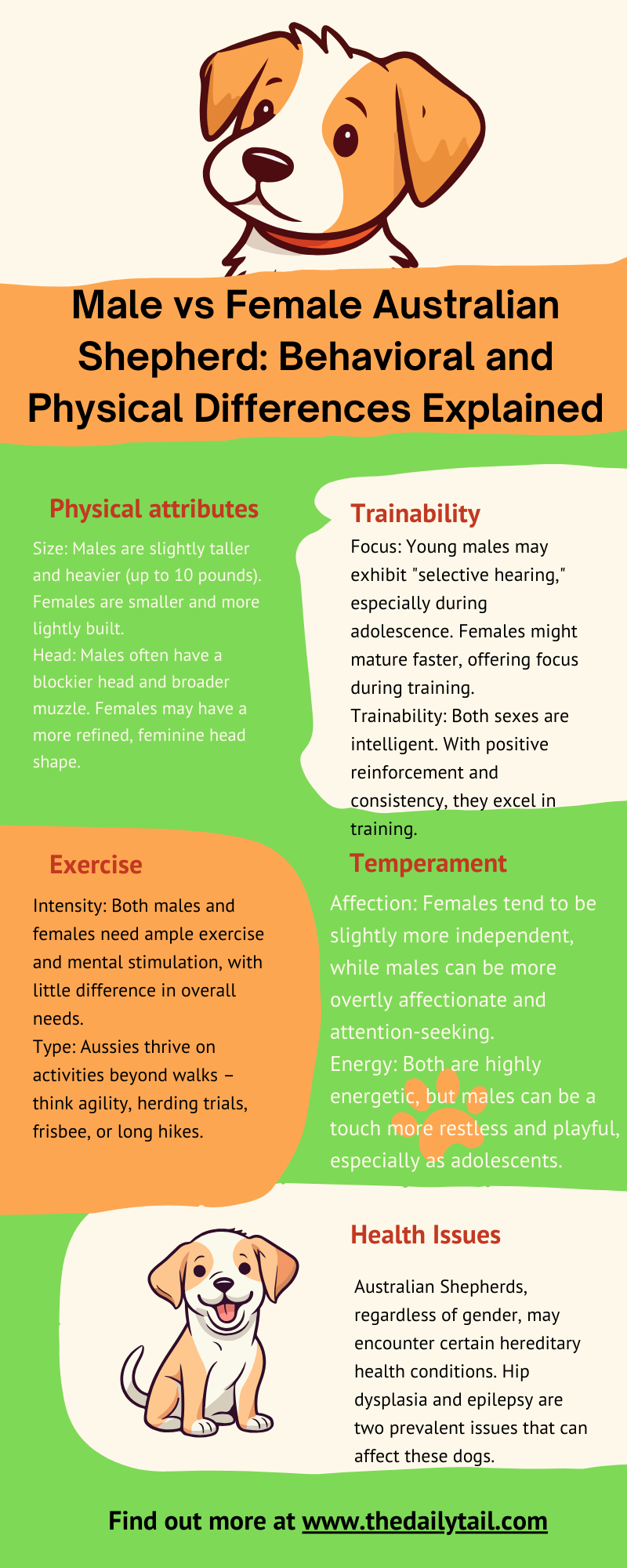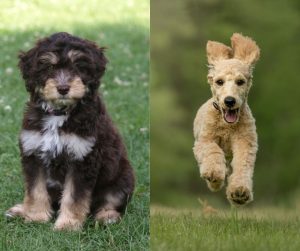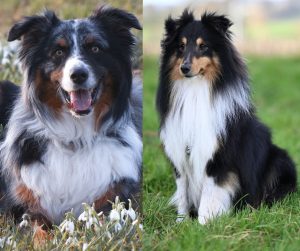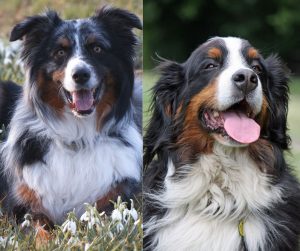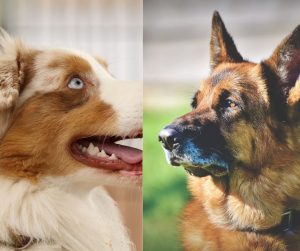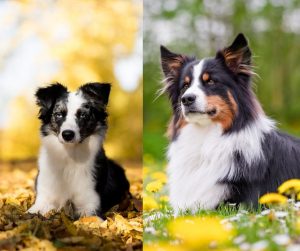When choosing an Australian Shepherd, potential owners often consider whether a male or female will be the better fit for their home and lifestyle. Australian Shepherds, known for their intelligence and herding abilities, also exhibit differences between the sexes which can influence an individual’s decision. These differences encompass aspects such as size, temperament, and behavior, and understanding these can assist in making an informed choice.
Male Australian Shepherds typically stand between 28 to 32 inches tall and weigh in the range of 55 to 70 pounds. They are known for their strong, muscular build and can display bold and assertive traits. On the flip side, female Australian Shepherds usually range from 25 to 29 inches in height and weigh between 35 to 55 pounds. They often present a more reserved demeanor and may be less dominant than males.
Beyond physical differences, prospective owners often reflect on temperament variations. While each Australian Shepherd’s personality is unique, males are frequently described as more outgoing and playful, whereas females might exhibit a more independent nature. However, both males and females are capable of being affectionate and loyal companions, sharing the same potential for trainability and eagerness to work. An understanding of these distinctions can enable individuals to select a companion who aligns best with their expectations and circumstances.
Living with dogs for decades, I’ve noticed subtle but fascinating differences between Aussie boys and girls. Want to know what makes them tick?
Today, we will take a look at the Male vs Female Australian Shepherd dog breed comparison.
Breed Overview
The Australian Shepherd, often known as the Aussie, is a well-regarded dog breed recognized for its intelligence, energy, and versatility. This section will explore the breed’s genesis and its defining physical and behavioral traits. Recognized by the American Kennel Club, this dog breed is among the top 20 most popular canines in the United States.History and Origin
The Australian Shepherd’s name is somewhat misleading, as the breed did not originate in Australia but in the United States. They emerged in the 19th century, likely from a mix of collies and other herding dogs imported from Australia, hence the name. Aussies were bred for their strong herding instincts and ability to work with livestock, becoming a fixture on American ranches.
General Characteristics
| Attribute | Characteristic |
|---|---|
| Size | Medium to large |
| Weight | Males: 55-70 pounds, Females: 35-55 pounds |
| Height | Males: 20-23 inches, Females: 18-21 inches |
| Temperament | Intelligent, energetic, work-oriented, trainable |
Australian Shepherds exhibit a range of colors and patterns including blue merle, black, red merle, and red, often with white and tan markings. Their coats are medium-length and slightly wavy, requiring regular grooming. Known for their agility and intelligence, they excel in various canine sports and activities. Training is typically well-received thanks to the breed’s eagerness to please and innate aptitude.
Physical Differences
Australian Shepherds exhibit distinct physical differences between males and females, specifically in terms of size and weight, and variations in coat and colors.
Size and Weight
Male Australian Shepherds generally stand taller and possess more body mass compared to their female counterparts. The males typically reach a height of about 20-23 inches, whereas females stand at 18-21 inches. In terms of weight, males weigh in between 55-70 pounds, and females range from 35-55 pounds, which can be attributed to differences in their overall build.
Coat and Colors
Both male and female Australian Shepherds have a double coat that may come in a variety of colors, such as blue merle, red merle, black, and red, often with white or tan markings. The texture and length of their coat can slightly vary between the sexes; males generally have a thicker and longer coat, which contributes to their robust appearance. It’s essential to note, however, that there is considerable overlap, and individual variance is common.
Behavioral Traits
This section details the distinct behavioral traits of Australian Shepherds, focusing on their temperament, working behavior, and their needs for energy expenditure. Understanding these traits is vital for potential owners to ensure compatibility and a harmonious relationship with these intelligent and active dogs.Temperament and Personality
Australian Shepherds are known for their loyal and affectionate nature, making them excellent companions. They exhibit a pleasant blend of intelligence and eagerness to please, which contributes to their trainability. However, their intelligence also means they can be stubborn, requiring consistent and patient training approaches. They thrive on mental stimulation; without it, they may resort to undesirable behaviors.
Herding and Working Behavior
With a strong herding instinct, Australian Shepherds are skilled working dogs. They are adept at various tasks and often excel in roles such as search and rescue, drug detection, and as service animals. Their focused and high-energy personality traits make them suitable for work that requires both physical and mental stimulation.
Energy Levels and Exercise Needs
Australian Shepherds possess high energy levels, demanding ample exercise and activity throughout the day. They are not suited for sedentary lifestyles or small living spaces without access to open areas for play and exploration. Without sufficient exercise, they may manifest their pent-up energy through destructive behavior. Owners should be prepared to provide consistent mental and physical stimulation to keep these high-energy dogs relaxed and content.
Health and Longevity
When considering the health and longevity of Australian Shepherds, one must examine common health issues, life expectancy, and aspects of reproductive health. These areas collectively influence the well-being and lifespan of these active canines.
Common Health Issues
Australian Shepherds, regardless of gender, may encounter certain hereditary health conditions. Hip dysplasia and epilepsy are two prevalent issues that can affect these dogs. Hip dysplasia, a malformation of the hip joint, can lead to arthritis and pain. Epilepsy, a neurological disorder that causes seizures, requires lifetime management and can impact a dog’s quality of life.
- Hip Dysplasia: Potential for arthritis, pain
- Epilepsy: Seizures, requires management
Regular check-ups with a veterinarian are crucial for early detection and treatment of these health concerns, as well as maintaining overall health and vitality.
Life Expectancy
The life expectancy of an Australian Shepherd generally ranges between 12 to 15 years. Factors such as genetics, diet, environment, and regular veterinary care can influence the lifespan of these energetic dogs. Maintaining proper weight through diet and exercise is essential for longevity and minimizing the risk of health conditions.
- Average Life Expectancy: 12 to 15 years
Reproductive Health
Reproductive health varies between male and female Australian Shepherds. In males, neutering can prevent certain conditions such as testicular cancer and prostatic hyperplasia. Neutering also curbs undesirable behaviors associated with hormonal differences. In females, spaying eliminates the risks of uterine infections and mammary cancer, as well as complications from the estrus cycle.
- Neutering: Reduces testicular cancer, prostatic hyperplasia risks
- Spaying: Prevents uterine infections, mammary cancer
Decisions on spaying or neutering should be discussed with a veterinarian, as they play a critical role in a dog’s long-term health and behavior.
Training and Socialization
When considering training and socialization aspects of Australian Shepherds, their high intelligence and eagerness to please make them highly trainable, while their affectionate nature generally leads to positive social behavior and family interaction.
Training Techniques
Australian Shepherds excel in agility and obedience due to their intelligence and organized nature. They are known for their love of challenges and their ability to bond with their trainers, which makes them well-suited for various training environments. Effective training techniques include:
- Positive Reinforcement: Rewarding good behavior with treats, praise, and play encourages them to repeat those behaviors.
- Consistency: Keeping commands clear and consistent is crucial for effective training
- Agility Training: Due to their natural agility, Australian Shepherds benefit from agility courses that keep training sessions stimulating and help burn off excess energy
- Early Socialization: Early exposure to different people, pets, and environments can help them become well-adjusted adults
Social Behavior and Family Interaction
Australian Shepherds are typically very affectionate with their families and are known to be attentive and playful. Their social behavior reflects their need for attention and interaction:
- Family-Oriented: They thrive on love and attention from their family and can be protective and affectionate toward their household
- Attention to Children: They are often good with children, showing a gentle, playful temperament
- Interaction with other Pets: Properly socialized Aussies can coexist well with other pets, though they may exhibit herding behavior
- Training Classes: Group training classes are beneficial, both for training and for socialization purposes, as they provide organized settings for Aussies to interact with others while learning
Care Considerations
When choosing between a male and female Aussie Shepherd, it’s important to consider the specific care requirements of each gender. This section details grooming and dietary needs that may influence an owner’s personal preference for maintaining the dog’s health and happiness.
Grooming and Maintenance
Australian Shepherds, regardless of gender, have a double coat that requires regular grooming. They typically shed year-round with increased shedding twice a year.
- Males: Typically boast a slightly thicker and longer coat, which may necessitate more frequent brushing to reduce matting and maintain coat health
- Females: They can also have profuse coats but are often less dense than their male counterparts, possibly allowing for slightly less rigorous grooming sessions
Both males and females will need their nails trimmed regularly, teeth brushed, and ears checked to prevent infection.
Owners should also consider spaying or neutering, as this can affect coat texture in some dogs and has implications for health care and potential behavior like dominance traits.
Diet and Nutrition
The Australian Shepherd is an active breed requiring a diet that sustains its energy levels.
- Exercise: They need plenty of exercise, so their diet should be rich in proteins and fats to support their energetic lifestyle
A balanced diet for both males and females should include:
| Nutrient | Importance |
|---|---|
| Protein | Builds and repairs muscle tissue |
| Fats | Provides energy and supports cell growth |
| Carbohydrates | Fuels daily activities |
| Fibers | Aids in digestion |
| Vitamins & Minerals | Supports overall health and immune response |
Portion control and monitoring body condition are critical, as weight gain can lead to health issues, and males may require larger portions due to their generally larger size. Always have clean water available to keep them hydrated.
One should consult a veterinarian for personalized advice since dietary needs can vary based not just on size but also on age, activity level, and individual health considerations like separation anxiety, which can sometimes affect eating habits.
Choosing Your Australian Shepherd
Choosing between a male Australian Shepherd or female Australian Shepherd hinges on understanding behavioral tendencies and physical differences that can influence their fit with your family and lifestyle.
Male vs Female Decision Factors
Physical Size:
- Male Australian Shepherds typically range in height from 28 to 32 inches and in weight from 55 to 70 pounds
- Female Australian Shepherds generally stand 25 to 29 inches tall, weighing between 35 to 55 pounds
Temperament:
- A male Australian Shepherd is often described as affectionate and may be more eager to please, following their owners around, which can be a sign of a loyal companion
- Females can display a greater degree of independence, which might be preferable for owners looking for a dog that is comfortable with some time alone
Maturity:
- Females may mature faster mentally, becoming more mature and settled before males, who can sometimes display exuberant behaviors for longer
Intelligence and Energy:
- Both genders exhibit a high level of intelligence and energy, traits inherited from their Border Collie ancestors, making them suitable for active families
Adoption and Puppy Selection
Adoption:
- When adopting, consider visiting shelters and rescues where Australian Shepherds may be waiting for a new home. It gives a chance to observe if their personality and level of maturity are right for you
- Whether male or female, an Australian Shepherd’s need for love and a stable home is paramount, with gender often being secondary to the individual dog’s characteristics
Puppy Selection:
- If choosing an Australian Shepherd puppy, meet both parents when possible to gauge future behaviors and look for signs of good health and temperament
- Personal preference and existing family pets might influence whether a male or female puppy is the best addition to your household
Final Words
When choosing between a male vs female Australian Shepherd, potential owners should consider various factors related to personality, care, and compatibility with their lifestyle. Both genders boast high intelligence and trainability, though they exhibit subtle differences in temperament.
Male Australian Shepherd:
- Are often regarded as more affectionate and may be more eager to please their owners
- Tend to be larger in size, with an average weight ranging from 55 to 70 pounds
Female Australian Shepherd:
- May display more independent traits, yet remain loyal and responsive companions
- Typically weigh between 35 and 55 pounds, making them slightly smaller on average
Both males and females can shed heavily, especially during seasonal changes. Regular grooming helps manage shedding and maintain their coat’s health.
The decision should align with the owner’s personal preference and consideration of the dog’s future role, be it as a working dog or a family pet. Compatibility with an individual’s lifestyle and readiness to meet the breed’s needs are paramount. Regardless of gender, these intelligent dogs require attention, exercise, and mental stimulation.
Ultimately, whether a male or female Australian Shepherd is a better fit will rely on the owner’s preparedness to nurture the dog’s wellbeing while embracing the breed’s traits.

